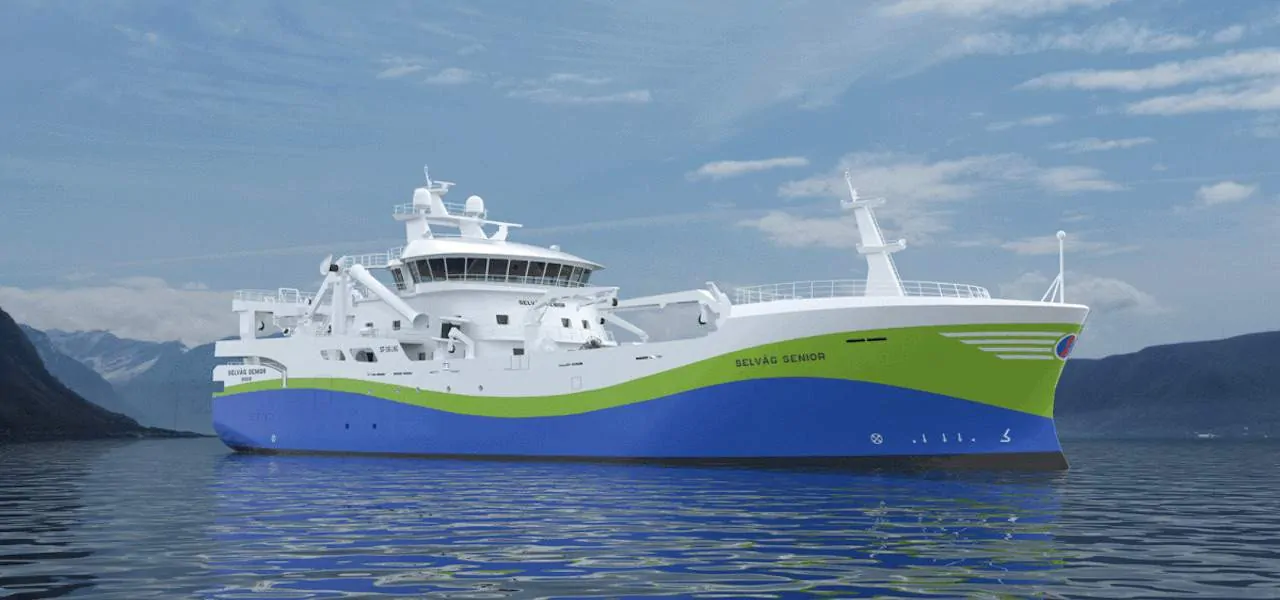A new pelagic vessel for Norwegian owners is predicted to be placed in the lead in minimising emissions when it is delivered to owners Selvåg Senior AS in 2023.
The new vessel will replace the existing Selvåg Senior, which was built in 1999, and owner Egil Sørheim would prefer to build the new pelagic catcher at a Norwegian shipyard, once financing and support schemes have been finalised.
According to fishing vessel operators’ federation Fiskebåt, the new Selvåg Senior has been designed by Skipsteknisk, in collaboration with SINTEF via the Optikjøl programme and Coolfish, which has studies refrigeration technology.

The intention is for the 80 metre vessel to be powered by a Wärtsilä 8V31DF main engine, with an energy system that incorporates a 1mW battery pack and a 350 cubic metre LNG tank.
‘When the gas is under pressure, it is cooled significantly. Its temperature has to be increased before it can be used as fuel,’ said Egil Sørheim.
That cold energy can be routed to the chilling systems for cooling the fish, and as burned fuel generates heat, that energy can also be utilised for heating, enabling optimal use of energy at both ends of the scale.
He commented that approximately half of the reduction in emissions is achieved through using LNG as fuel, while additional gains are made through heat and cold recovery, an optimised hull design, electric winch systems and other energy-saving features.
Egil Sørheim said that there are still gaps in the fuel supply infrastructure and there are certainly challenges to be faced when investing in an LNG-powered vessel.
‘We will have to rely mainly on refuelling from a tanker truck. It’s also a challenge that it’s not so easy to plan exactly when we dock, and can book a tanker in advance. But we expect this to improve as demand increases,’ he said.
The new vessel’s hybrid energy system will allow it to charge its battery from sources ashore, but this also presents challenges as relatively few harbours offer this level of power. Consequently, Selvåg Senior’s design includes a diesel auxiliary able to charge the battery while unloading, but as this is expected to run for around 50 hours per year, this will not account for any serious emissions.
Egil Sørheim commented that environmentally-friendly solutions are expensive, and the cost of a vessel like this far exceeds that of a conventional fishing vessel.
‘We are relying on Enova and the NOx fund to make this possible,’ he said, adding that these funds have supported other such ventures before now.
‘The calculations based on LNG being a lower-cost fuel than diesel means that the investment will pay off in the longer term, both for the company and the wider community as we will be reducing emissions of greenhouse gases,’ Egil Sørheim said.
Compared to a conventional fishing vessel, Selvåg Senior running on LNG is expected to reduce SOx emissions by 97%, NOx by 85% and CO2 by 45% to reduce emissions by 42%, which includes taking out emissions of 6.37 tonnes of methane.





